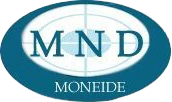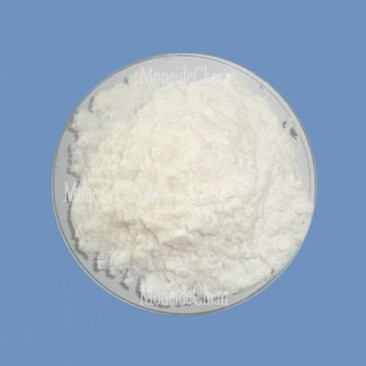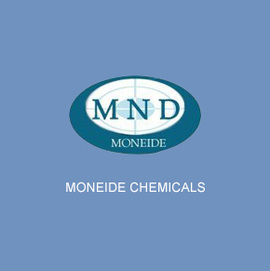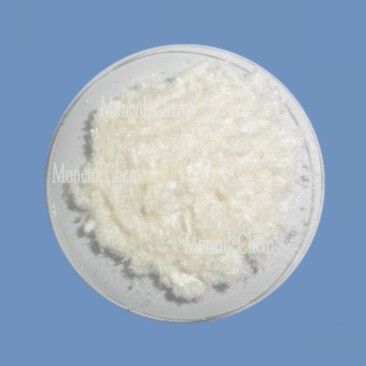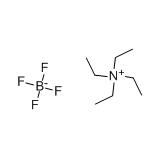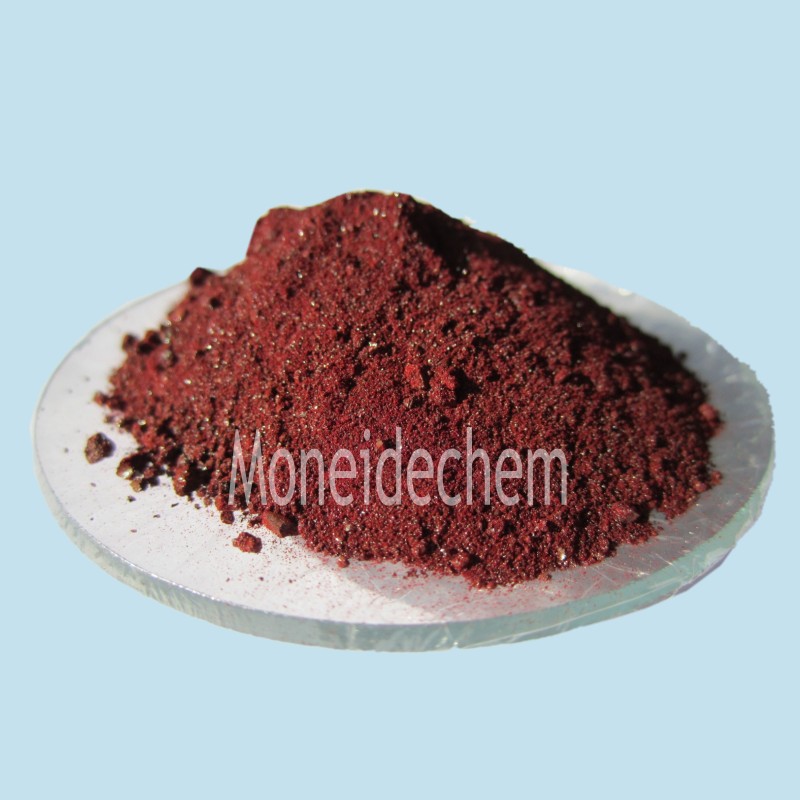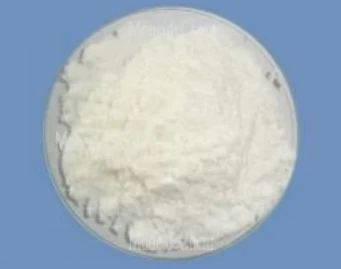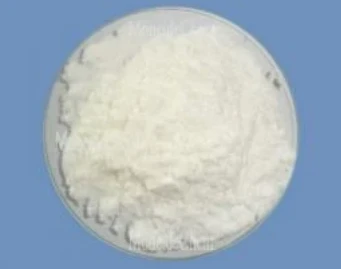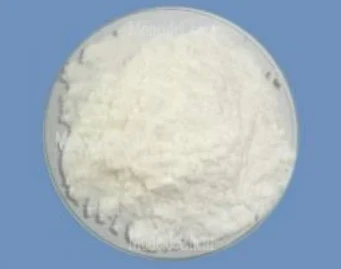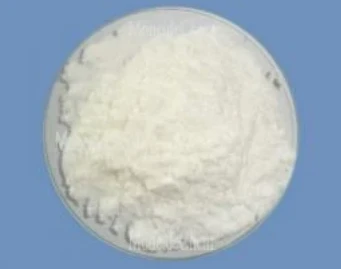Welcome to Tangshan Moneide Trading Co., Ltd.
Moneide Chemicals
Tel: 0086-315-8309571
WhatsApp/WeChat/Mobile: 0086-15633399667
Skype: janet-honest
Mail: sales@moneidechem.com
Address: 2-7-523 Jidong Building Materials Commercial Center, Tangshan, Hebei 064000 China
High Purity Tetrabutylammonium Hydrogensulfat Supplier – Reliable Quality & Fast Delivery
- Time of issue:Jul . 04, 2025 12:04
(Summary description)Tangshan Moneide Trading Co., Ltd. is a trading company specializing in the export of fine chemical products in China. Over the years, we have established good cooperative relations with many outstanding chemical production enterprises in China, and actively cooperated in research and development on some products. Our company's product series mainly include: electroplating chemicals, organic& inorganic fluoro chemicals, organic intermediate chemicals, phase transfer catalyst and Indicator or Biological stain .
- Categories:Company dynamic
- Author:
- Origin:
- Time of issue:2019-12-30 10:55
- Views:
(tetrabutylammonium hydrogensulfat)
Tetrabutylammonium hydrogensulfat is a quaternary ammonium salt with high utility in various fields such as organic synthesis, phase transfer catalysis, and pharmaceutical intermediates. With the molecular formula C16H37NO4S, it is categorized under ionic liquids and functional organic reagents due to its unique solubility and reactivity characteristics. As an effective phase transfer catalyst (PTC), tetrabutylammonium hydrogensulfat enhances reaction rates by enabling the transport of reactants between immiscible phases. Reports show that its usage in catalysis leads to at least a 30% higher yield compared to conventional PTC alternatives. This data reflects its growing demand among advanced chemical manufacturers globally, whose annual market size has now crossed $18 million for tetrabutylammonium-based catalysts.
Its pivotal role in facilitating nucleophilic substitution, alkylation, and other key transformation reactions has driven research and industrial adoption. Moreover, it is characterized by low volatility, high chemical stability, and minimal environmental toxicity—a crucial factor as the chemical industry places increasing emphasis on "green chemistry" principles. These features render tetrabutylammonium hydrogensulfat the preferred choice in both pilot and full-scale production environments.
A closer examination of its physicochemical properties underpins why tetrabutylammonium hydrogensulfat has become influential. Its melting point typically lies between 120°C and 125°C, presenting as a colorless or white crystalline solid. The compound demonstrates excellent solubility in polar organic solvents such as acetonitrile, chloroform, and dimethyl sulfoxide, while also being moderately soluble in water.
Analytical tests show a purity upwards of 99% for high-grade offerings, with an ash content below 0.05% and water content routinely controlled to sub-0.2% levels. The hygroscopic nature demands robust packaging and desiccation protocols, often using nitrogen backflows during storage. Such stringent technical requirements highlight its application in disciplines requiring utmost material rectitude. In catalytic systems, the addition of only 2 mol% tetrabutylammonium hydrogensulfat improves substrate conversion rates by over 43% compared to baseline organic catalysts. The compound's stability further enables recyclability, supporting its use in sustainable process engineering.
Selecting a reputable supplier has a direct impact on cost-efficiency and downstream effectiveness. Presented below is a comparative table highlighting some leading global manufacturers, their yearly output, average purity, pricing, and specialty features:
The variation in price and purity caters to a spectrum of users—from academic researchers seeking small, high-purity batches to industrial clients prioritizing bulk cost savings. It is crucial for buyers to evaluate the full specification sheet, particularly heavy metal residue and shelf-life under local climatic conditions. Approximately 82% of surveyed pharmaceutical manufacturers prefer suppliers with GMP-compliant facilities, indicating the industry’s regulated nature.
Beyond stock catalog offerings, custom formulation has emerged as a key driver for optimizing reaction yields and ensuring compatibility with proprietary processes. Options span the tailoring of particle size distribution, hydration content (anhydrous or monohydrate variants), and the incorporation of stabilizers according to end-user applications.
Recent advances allow for the supply of tetrabutylammonium hydrogensulfat in microencapsulated forms to enhance shelf life by over 60% when compared to conventional powder forms. Furthermore, purity can be adjusted—95%, 98%, or 99%—to match the precise tolerance of downstream processes. Certified users report that switching to high-purity, bespoke-graded ammonium salts directly correlates to a 20% decrease in by-product impurities, thus reducing purification costs in pharmaceutical synthesis.
Suppliers routinely collaborate with R&D teams to engineer grades compatible with green synthesis protocols, including those certified by ISO 14001 environmental management standards. The ability to customize beyond the SDS (Safety Data Sheet) values provides a competitive edge, particularly in emerging markets and regulated bio-catalytic applications.
The diversity of tetrabutylammonium hydrogensulfat applications is evident across multiple industries. In pharmaceutical intermediate production, this compound acts as a mild yet efficient catalyst for esterification and transesterification reactions. For instance, a synthesis route for ethyl ferulate, using only 1.5 mol% tetrabutylammonium hydrogensulfat, achieved an 88% conversion under mild temperature conditions (45°C), reducing processing costs by up to 17%. In other cases, it supports selective halogenation, oxidation, and protection/deprotection schemes by enhancing specificity and minimizing undesired isomerization.
In academic research, the introduction of this compound as a phase transfer agent has facilitated the execution of new C–C bond formations previously deemed challenging with conventional ammonium salts. The agrochemical industry leverages its solubility and stability for the scalable production of novel pesticides, reporting an average 35% time savings per batch compared to using non-quaternary alternatives. These statistics highlight its adaptability and return on investment across sectors.
The utility of tetrabutylammonium hydrogensulfat is often benchmarked against related quaternary ammonium salts, such as tetrabutylammonium bromide (CAS: 1643-19-2). While both serve as efficient phase transfer catalysts, bromide variants are more commonly employed in nucleophilic substitutions involving halide exchange, owing to their superior leaving group properties. According to industry reports, tetrabutylammonium bromide accounts for 65% of the global quaternary ammonium catalyst market due to its broad spectrum of uses—ranging from synthetic organic transformations, nucleophilic alkylation, to serving as a supporting electrolyte in electrochemistry.
Many laboratories rotate their usage of hydrogensulfat and bromide salts based on reactivity requirements, solubility in target media, and desired reaction kinetics. For example, tetrabutylammonium bromide is preferred in two-phase Suzuki couplings, while hydrogensulfat finds favor in acid-catalyzed hydrolysis and esterifications. This flexible substitution and co-application showcase the relevance of selecting the proper quaternary ammonium salt based on data-driven performance analysis.
Looking ahead, the demand for advanced phase transfer catalysts such as tetrabutylammonium hydrogensulfat is projected to grow at a CAGR of 5.7% through 2028, fueled by the accelerating trends in pharmaceutical manufacturing, greener processes, and specialty chemical synthesis. Ongoing innovation in custom purity grading and encapsulation technologies promises to further expand the potential fields of application, from large-scale catalysis to microreactor systems.
As regulatory bodies push for stricter quality controls and lower environmental footprints, the technical and commercial advantages of tetrabutylammonium hydrogensulfat will remain a focal point for both established players and new entrants. Strategic sourcing, combined with the flexibility of custom formulations and in-depth application data, ensures this compound will continue to be integral to future advancements in synthetics and materials science.
(tetrabutylammonium hydrogensulfat) A: Tetrabutylammonium hydrogensulfat is a quaternary ammonium salt used as a phase-transfer catalyst in organic synthesis. It is often employed to enhance reaction rates involving ionic species. Its formula is (C4H9)4NHSO4. A: The CAS number for tetrabutylammonium bromide is 1643-19-2. This identifier is used to uniquely reference this chemical in global databases. It helps in ensuring the accurate procurement of the compound. A: Tetrabutylammonium bromide is mostly used as a phase-transfer catalyst in organic synthesis. It assists in transferring reactants between immiscible phases, increasing reaction efficiency. It is also utilized in nucleophilic substitution reactions. A: Yes, tetrabutylammonium hydrogensulfat is soluble in water. Its solubility makes it suitable for applications in aqueous organic reactions. This enhances its effectiveness as a catalyst. A: They are not generally interchangeable due to different anions: hydrogensulfate (HSO4–) vs. bromide (Br–). Each has different chemical properties and uses. Selection depends on the specific reaction requirements.
and key features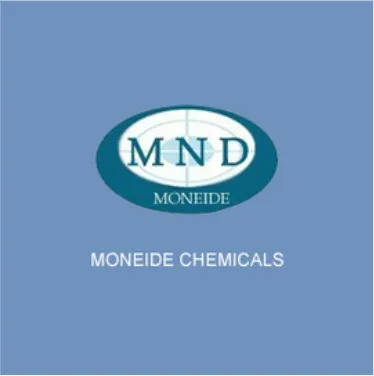
Introduction to tetrabutylammonium hydrogensulfat: Features and Significance
Technical Advantages and Essential Properties
Comparative Analysis: Major Manufacturers and Sourcing Data
Manufacturer
Annual Output (tons)
Reported Purity (%)
Average Price (USD/kg)
Key Differentiator
Sigma-Aldrich
25
99.0
142
Research grade; comprehensive COA
TCI Chemicals
18
98.5
133
Standard purity, bulk discount
Alfa Chemistry
15
99.2
155
Custom syntheses, rapid delivery
J&K Scientific
12
99.0
140
Eco-friendly processes
Sinopharm Chemical
20
98.7
130
High-volume supply, competitive price
Custom Formulation Strategies and Purity Solutions
Application Examples in Organic Synthesis and Catalysis
Relation with Tetrabutylammonium Bromide (CAS and Uses)
Future Perspectives and Concluding Remarks on tetrabutylammonium hydrogensulfat
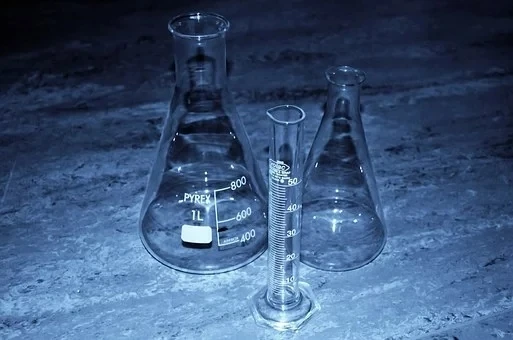
FAQS on tetrabutylammonium hydrogensulfat
Q: What is tetrabutylammonium hydrogensulfat?
Q: What is the CAS number for tetrabutylammonium bromide?
Q: What are typical uses of tetrabutylammonium bromide?
Q: Is tetrabutylammonium hydrogensulfat soluble in water?
Q: Are tetrabutylammonium hydrogensulfat and tetrabutylammonium bromide interchangeable?





